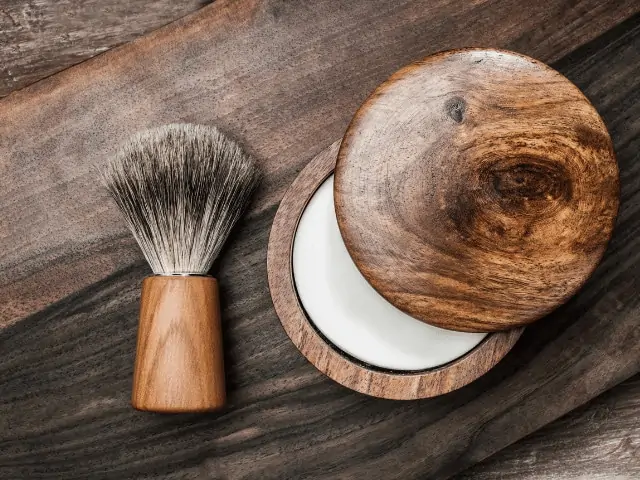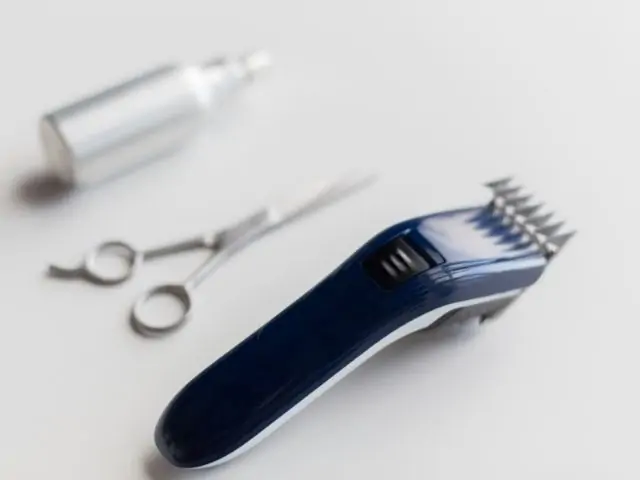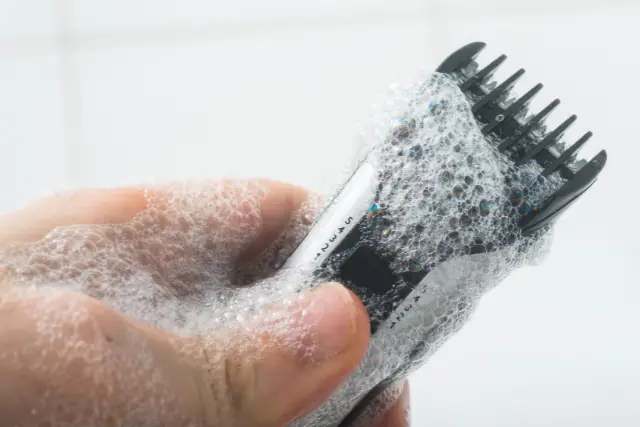Another razor cut and possibly a bump incoming. You know shaving shouldn't be this unpleasant and seek a remedy.
Shoot!
After doing some research, you discover shaving creams aren't for show after all. Now, you have to deal with the dilemma of choosing between shaving cream and soap.
While both are great ways to moisturize the beard and ease shaving, we'll discuss their differences to put you at ease.
Lather up. It's shaving cream vs soap!
Page Contents
- Differences Between Shaving Cream vs Shaving Soap
- Shaving Soap vs Cream: Similarities And Differences
- What Are Shaving Creams?
- Ingredients Commonly Found in Shaving Creams
- What Are Shaving Soaps?
- Ingredients Commonly Found In Shaving Soaps
- Shaving Cream vs Soap: Frequently Asked Questions
- Shaving Soap vs Cream: Final Decision
Differences Between Shaving Cream vs Shaving Soap
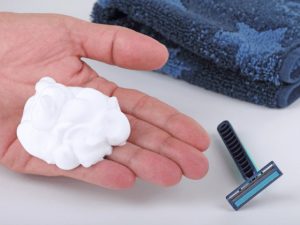
The main differences between Shaving Cream vs Shaving Soap are:
- Shaving cream is the best option for beginners to wet shaving, whereas shaving soap requires a learning curve.
- Shaving creams have a soft, "creamy" consistency, whereas shave soaps are hard and require more water to make a lather.
- Shaving creams are easy to use but less economical, whereas shaving soaps last longer.
- Shaving creams make a lather with or without a brush, whereas shaving soaps always require a brush.
Shaving Soap vs Cream: Similarities And Differences
Shaving creams and soaps are both exceptional traditional/wet shaving choices.
Slick And Moisturizing
They are considered the best options compared to other alternatives like aerosol shaving cream or hand soap. It's why it's a shaving soap vs cream battle.
However, the main differences between shave soap vs cream are their consistency and ingredients.
Constituency Differences
Ingredients commonly found in shaving creams include - Myristic acid (a surfactant) and Methylchloroisothiazolinone (a preservative). On the other hand, moisturizing shave soaps usually contain Tallow, Jojoba Oil, and Shea butter.
Consistency Differences
Another easily detectable difference between these two is their consistency.
Shaving creams, as their name implies, are creamy. And they are as easy to make lather as toothpaste and brush. So it's advisable to start wet shaving with a cream.
Meanwhile, shave soaps are the opposite - they are hard and shaped like a puck. As a result, you'll need a good brush and solid preparation technique to whip up a good lather. But traditional guys will tell you soaps make a fluffier and slicker lather.
Now let's dive in a little further into each of them.
What Are Shaving Creams?
Shaving creams are cosmetic creams applied to the skin before shaving to ease the process and minimize the effects of aftershave, such as cuts, bumps, and irritation. In addition, they contain ingredients for enhancing the post-shave face feel and nurturing the skin.
A good shaving cream, a nice brush, and some water are all you need for a clean shave.
Ingredients Commonly Found in Shaving Creams
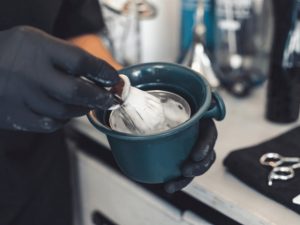
Let’s get to know what ingredients consist of shaving creams for straight razors...
1. Myristic Acid
Myristic acid is an organic fatty acid made from saponifying (big word for converting fat or oil into soap) coconut oil. It cleanses the skin and possesses excellent emulsifying properties helpful in creating and maintaining lather.
Also, it ensures the distribution of the ingredient list doesn't get messed up.
2. Methylchloroisothiazolinone
This is a common preservative and helps to prolong the shelf life of shaving creams. It also has antibacterial and antifungal properties but may cause mild contact dermatitis in vulnerable people or folks with sensitive skin.
3. Water
It is helpful to dissolve many of the ingredients present in creams. Water also aids the lathering process when added and is an essential ingredient in shaving soaps too.
4. Stearic Acid
The presence of stearic acid in shave creams creates a velvety lather when mixed with water.
Aside from moisturizing, it also softens the hair, priming it for a smooth cut.
5. Sodium/Potassium Hydroxide
They are essential ingredients in forming the base of both shaving creams and soaps.
Sodium hydroxide is used as the main base and is found in small amounts in creams, while potassium hydroxide is the principal saponifying agent.
6. Glycerin
Glycerin is helpful for its humectant property. In other words, it hydrates the skin after shaving.
But...
However, in the right mix, it works exceptionally for sensitive skin.
What Are Shaving Soaps?
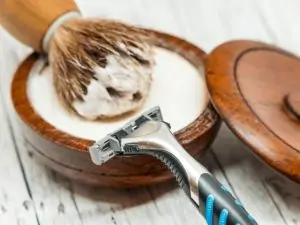
Shaving soaps are typically hard soaps that can be whipped up into a lather with your best shaving brush.
While shave soaps also leave a soothing post-shave feel like creams, some learning and mastery are involved in their preparation. So don't panic if you don't get it right on your first try.
Ingredients Commonly Found In Shaving Soaps
1. Tallow
Tallow is a fatty acid gotten from cattle by melting the initially solid fats with steam. Most times, it is mixed with coconut acid or oil and then saponified.
2. Jojoba
This oil is obtained from the jojoba (S. Chinensis) plant seed and cannot be saponified. Jojoba functions well with glycerin to leave the skin deliciously supple and hydrated after shaving.
3. Shea Butter
Shea butter is a natural moisturizer from the African Shea Tree. In addition to jojoba oil, it helps retain moisture and return the skin to its normally hydrated state.
N.B: Like shaving creams, water, stearic acid, sodium/potassium hydroxide, and glycerin are present in shaving soap formulations in varying proportions.
Shaving Cream vs Soap: Frequently Asked Questions
What is the best shaving cream to use for sensitive skin?
You can make a good decision about which shaving cream to buy for sensitive skin based on the ingredient list. Contents like aloe or oatmeal are great for preventing irritation due to sensitive skin.
Can I use shaving soap and shaving cream alternately?
Yes, you can. However, it is better to stick with one product at a time to ensure the best results.
Watch here how to lather with shaving soap and shaving cream:
What is better to use - a shaving cream or soap?
If you want a quick shave, then shaving creams for wet electric shavers are up to the task. However, if you want to make a ritual out of your shaving routine, then shaving soaps win. While these two differ in some ways, which one is better is subjective and based on your preference, skin type, and what you hope to achieve from using them.
Shaving Soap vs Cream: Final Decision
If it were down to the polls, shaving soaps would be the winner for a comfortable, close, and clean shave.
But we believe it’s all about your preference. Someone else may prefer the superb moisturizing qualities of shaving soaps. And that they’re easy, almost effortless to prepare.
Hopefully, whenever you find yourself in the grooming aisle of the supermarket (or online store), you’ll make an informed decision.
Read this guide to better understand how to choose a shaving cream and also see our review of best shave creams for electric razors and safety razors online for more information.
Hope this helps.

